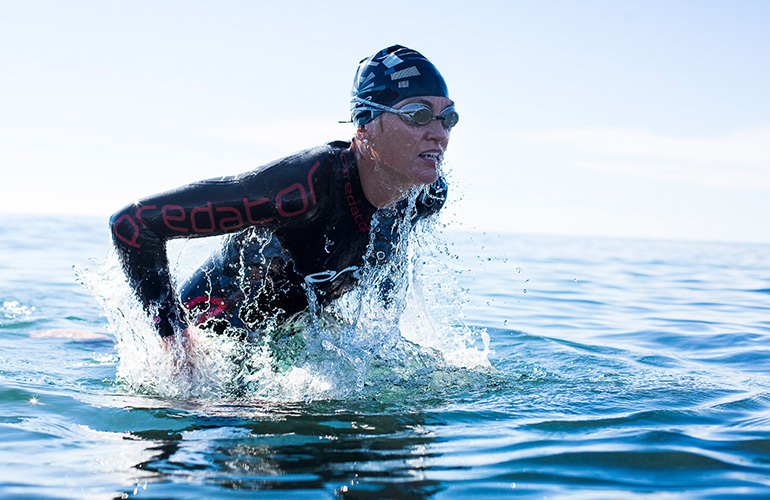Last week we kicked off the first instalment of our four-part series following Suunto athlete Åsa Lundström as she prepares for the coming Ironman World Championship in Kona, Hawaii. After looking at step one last week, planning, this week Åsa tells us what progress, step two, looks like as her training intensifies.
There’s one crucial sign Åsa looks for to know she’s making progress in her training for the Kona Ironman: feeling unbeatable.
“They don’t come very often, but every now and then, you should get that moment, if only for a moment, that you are unbeatable,” she says. “If I don’t ever get those ‘I’m on fire today!’ moments in my training periods, then something needs changing.
“I don’t do tests or anything like that to check I’m in good shape, I just look for signs, a feeling, during the quality sessions I do – it’s the feeling of being immortal, unbeatable, strong.”
Click here to read more about Åsa Lundström, the unlikely Swedish triathlete

© Orca/Gines Diaz
Having planned her training with her coach Cliff English, it’s then time to make rapid progress, to push herself towards her personal best while also ensuring she has enough recovery time.
Åsa’s training progresses through three stages: the first is getting into the rhythm of hard training; the second stage involves blocks of quality and quantity sessions; and the last is a tapering period of two weeks before race day.
As Åsa moves through the three stages, her coach Cliff English tracks her performance and makes adjustments to her training as required. Understanding and trust between athlete and coach is essential here.
The longer Cliff works with an athlete, the more data he accumulates, which better helps him track the athlete’s performance and recognize when changes must be made. This means both he and Åsa must be sensitive to signs they’re pushing too hard or not hard enough.
Click here to read Åsa’s 8 open water swimming tips!

“If I start having trouble sleeping, or lose my appetite that could be a sign to back off a bit,” Åsa says. “On the other hand, if I never feel exhausted after a quality session, but have an unsatisfying feeling, that could be a sign of not pushing hard enough.
“I am supposed to feel tired between the sessions more or less all the time.”
As her training intensifies, Åsa also works on the mental side of her training by spending time visualizing the race, the potential scenarios that could happen and how she would respond to them.
“As race day gets closer, I also stop meeting people who might be sick, or even just have a minor cold,” she says. “I skip junk food and unnecessary treats and I make sure I get enough sleep every night.”
Stay tuned for third installment of our four part series about Åsa as she makes progress on the road to the Ironman World Championship in Kona.